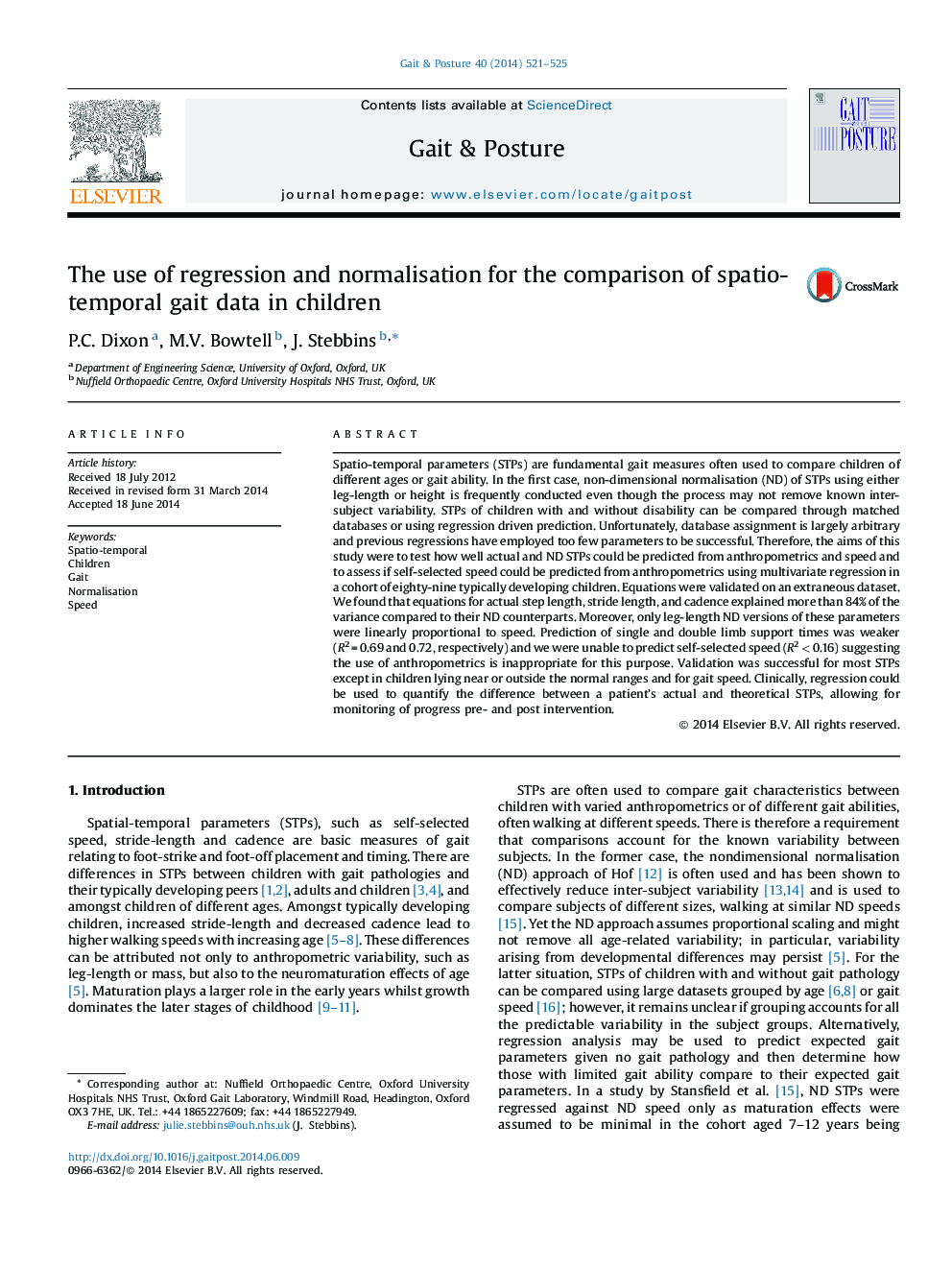| کد مقاله | کد نشریه | سال انتشار | مقاله انگلیسی | نسخه تمام متن |
|---|---|---|---|---|
| 6205913 | 1603853 | 2014 | 5 صفحه PDF | دانلود رایگان |
- Comparison of spatio-temporal parameters (STPs) across groups is common.
- Normalisation of STPs might not account for known inter-subject variability.
- Predictive ability of previous regression analyses for STPs have been poor.
- Stepwise regression and non-dimensional normalisation (ND) are effective for stride-length and cadence.
- Self-selected speed does not respond well to regression or ND.
Spatio-temporal parameters (STPs) are fundamental gait measures often used to compare children of different ages or gait ability. In the first case, non-dimensional normalisation (ND) of STPs using either leg-length or height is frequently conducted even though the process may not remove known inter-subject variability. STPs of children with and without disability can be compared through matched databases or using regression driven prediction. Unfortunately, database assignment is largely arbitrary and previous regressions have employed too few parameters to be successful. Therefore, the aims of this study were to test how well actual and ND STPs could be predicted from anthropometrics and speed and to assess if self-selected speed could be predicted from anthropometrics using multivariate regression in a cohort of eighty-nine typically developing children. Equations were validated on an extraneous dataset. We found that equations for actual step length, stride length, and cadence explained more than 84% of the variance compared to their ND counterparts. Moreover, only leg-length ND versions of these parameters were linearly proportional to speed. Prediction of single and double limb support times was weaker (R2Â =Â 0.69 and 0.72, respectively) and we were unable to predict self-selected speed (R2Â <Â 0.16) suggesting the use of anthropometrics is inappropriate for this purpose. Validation was successful for most STPs except in children lying near or outside the normal ranges and for gait speed. Clinically, regression could be used to quantify the difference between a patient's actual and theoretical STPs, allowing for monitoring of progress pre- and post intervention.
Journal: Gait & Posture - Volume 40, Issue 4, September 2014, Pages 521-525
